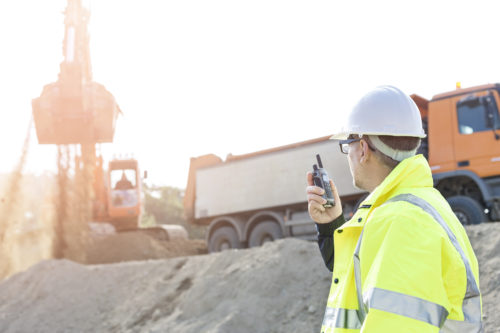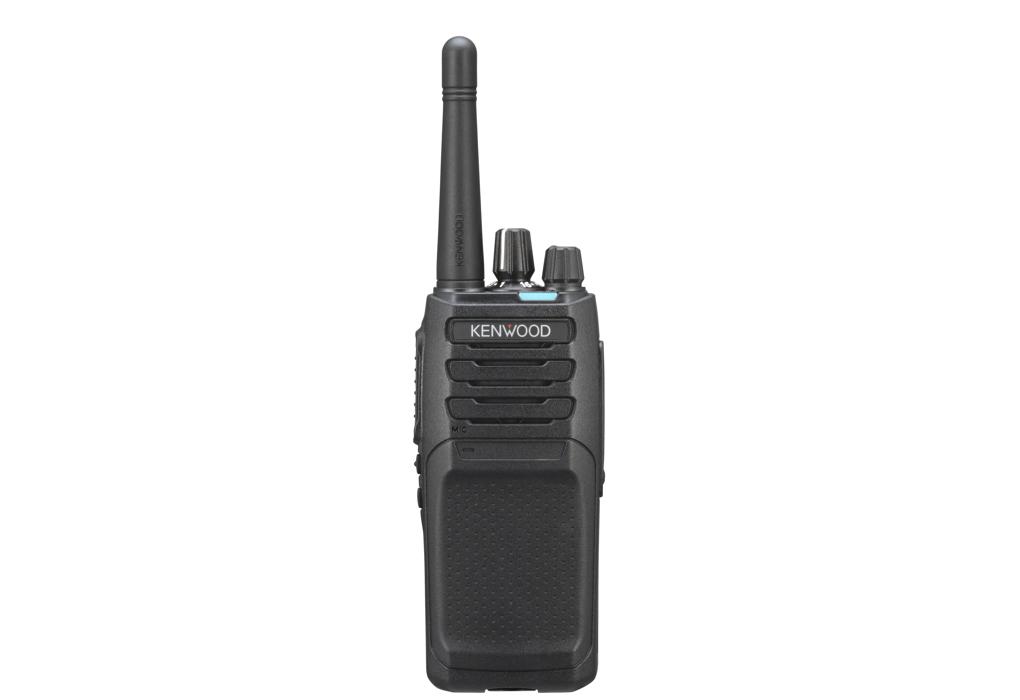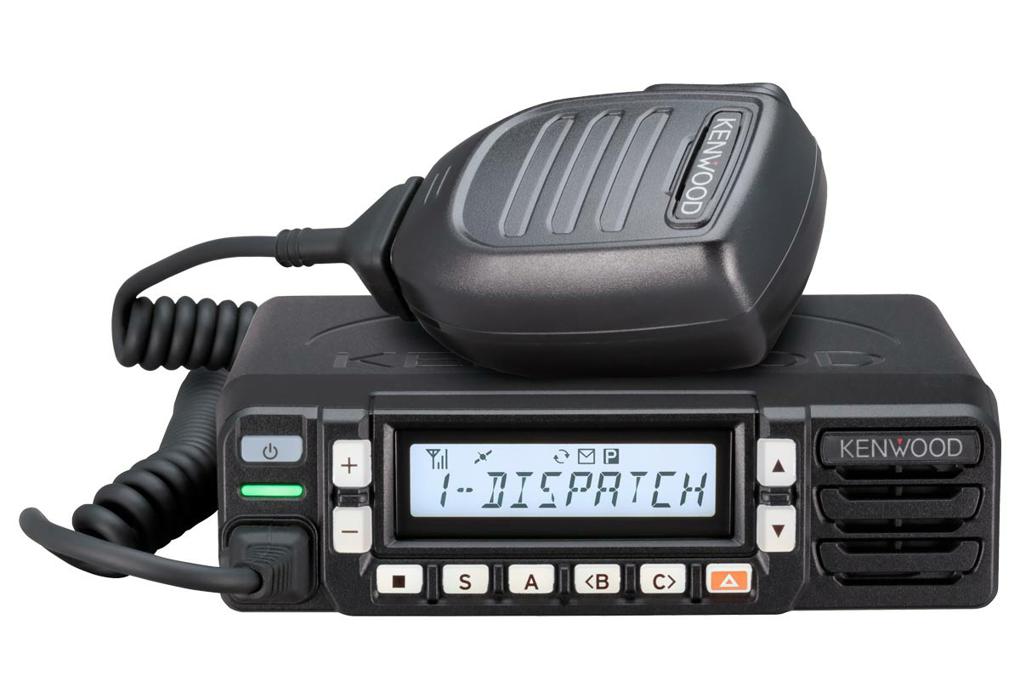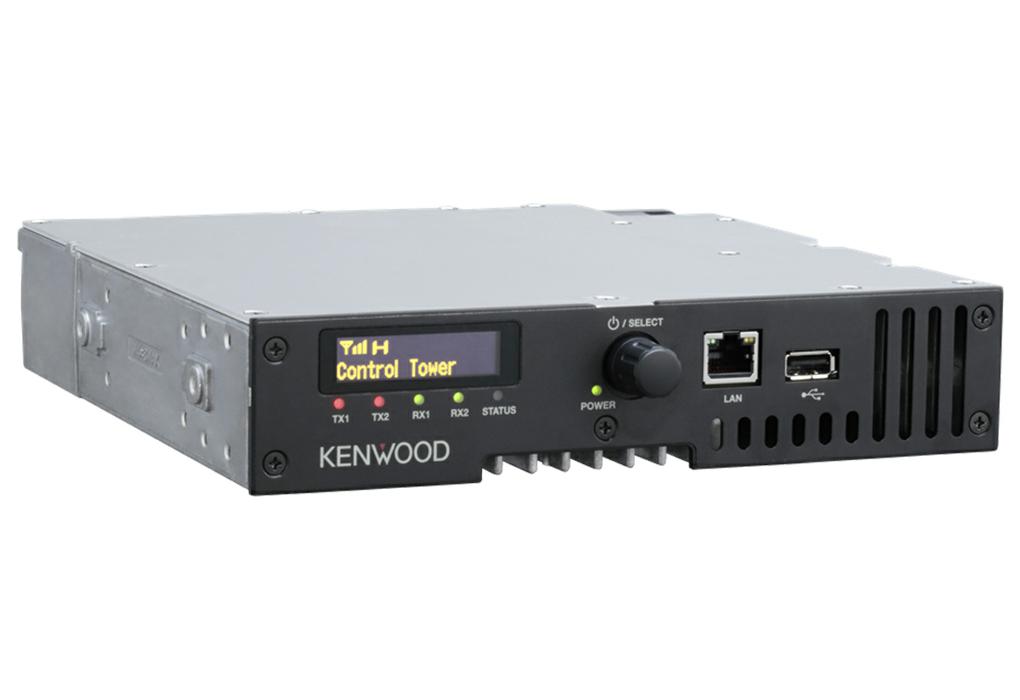
Most two-way radios operate in simplex mode, meaning they can transmit and receive but not both at the same time. They will invariably have a PTT (push to talk) button to enable transmission.
Radios can be handheld, commonly known as ‘walkie-talkies’, mobile (vehicle mounted), base stations or repeaters.
Operation of two-way radio equipment in the UK is regulated by Ofcom and apart from licence-exempt equipment known as PMR446, a licence is required.

PMR446 Licence-Exempt Radio
PMR446 is a simple and cost-effective licence-exempt handheld radio service. Equipment conforming to the PMR446 standard is available to anyone for business or leisure purposes and may be used throughout the UK and much of the European Union.
The service operates on a number of predefined frequencies at around 446Mhz (hence the name) on an uncoordinated basis. In urban areas channels can be congested and interference from other users is not uncommon. The latest digital PMR446 radio equipment has alleviated this to a certain extent with the opening up of additional ‘digital-only’ channels to which the older equipment in the field does not have access.
Whilst PMR446 has its place for business use, with the advent of Ofcom’s low-cost Simple UK and Simple Site licences and the narrowing of the price differential between licensed and PMR446 radio equipment we would recommend licensed two-way radio because of the expansion possibilities the equipment and technology allows for.

Handheld radios
Handheld radios are widely used in the security, construction and leisure industries. They are available in the VHF and UHF bands and power outputs vary from 0.5 to 4W (UHF) and 0.5 to 5W (VHF), the exact output power is determined by the terms of your Ofcom licence.
They are battery powered and typically able to operate for 8 to 15 hours from a single charge. The most basic units are lightweight and of rugged construction designed for straightforward voice communication. More advanced handheld radios have displays and keypads allowing sending and receiving of text messages, GPS location tracking and lone worker protection. These handheld radios are designed and built to varying IP (Ingress Protection) ratings with some units being fully waterproof rated IP68.

Mobile Radios
Mobile two-way radios are designed for installation into vehicles, deriving their power from the vehicle’s power supply. They are connected to an external antenna providing a more powerful and efficient service than that achievable with a purely handheld solution. With power outputs available, subject to licence, of up to 25W, a mobile radio will enhance the range of your communications system.
Mobile units are typically supplied with a mounting cradle and fist microphone, however, Link are able to provide a mounting kit for most models that enables the radio to be installed in a vehicles available DIN slot. This protects the radio, providing an increased level of security from theft and also helping the aesthetics of the finished installation. We are also able to supply a variety of fixed microphones, which allied with the use of remote PTT buttons or foot-switches, allows semi-handsfree operation. The simplest of mobile units are typically supplied with controls for volume and channel operation. But, as in the case of hand-portable units, the more advanced units can be equipped with displays and keypads to allow text messaging, additional call facilities and functions such as lone worker, GPS, scan and emergency calling.

Base Station Radios
Most base station two-way radios are mobile radios mounted on a mains power supply unit, sometimes with a battery backup, connected to an externally located base station antenna. A base station will enable a secure control point to be manned 24/7 as part of an overall radio communications system.
The most simple of base station units are typically supplied with controls for volume and channel operation. However, the more advanced units can be equipped with displays and keypads to allow text messaging, additional call facilities and functions such as lone worker alerts, GPS, scan and emergency call handling. Base units can also be connected to a PC to enable dispatcher operation to track units, provide log on/off information, voice recording and other desired functionality. Range is determined by the antenna height, location and licence restrictions.

Repeaters
Repeaters are two-way radios that can operate in full duplex mode i.e. transmitting and receiving at the same time. They effectively work as an unmanned base station, relaying or “repeating” received communications automatically via a more efficient, usually higher mounted antenna. Usually sited at the centre of the required operational area, the repeater will enhance the communication range achievable between the mobile and/or handheld devices.
A system operating in analogue mode will require a repeater per channel/frequency, however, the latest digital DMR repeaters, since they operate with two unique “time slots” effectively give the user two “Channels” per repeater. These two channels can operate completely independently of each other and can transmit and receive simultaneously without contention or interference, effectively doubling system capacity, but with one repeater, one antenna and one Ofcom licensed frequency. Range is determined by the antenna height, location and licence restrictions.
Two-way radio systems
Two-way radio systems often use a combination of the different radio types dependent on requirements. With the advent of digital radio, radio systems can easily be linked via the internet to provide for enhanced coverage in buildings, tunnels etc or to provide geographical coverage.
The most simplistic of systems comprise of a number of radios, either handhelds or mobiles or a combination of both, working ‘back to back’ with no infrastructure. Range is limited depending on the environment in which the radios are operating. Handhelds working in such a manner may achieve up to a mile between units in the open but may be down to a few hundred metres inside, for instance, a shopping centre or office complex of concrete and steel construction. Mobile radios, with their more efficient antennas and higher power output, can typically communicate over three to four miles. With these simplex (single frequency) systems, range is very much dependent on the location of the radio units in relation to each other. One unit moving just a few metres may render communications impossible.
The addition of a base station radio, with an externally located and elevated antenna, can substantially increase the range. Achievable range is ultimately dependent upon antenna height and local topography. With the addition of a base station a radio system can be designed and configured to give a defined area of coverage with the surety that a radio unit in that coverage area will be able to communicate with the base. Handhelds may typically be able to communicate with the base from up to five miles distance. With a base station antenna erected on a barn or farmhouse you can expect a range of up to 15 miles radius for mobile radios subject to local topography. Communication is restricted to base to mobile/handheld and mobile/handheld to base.
If a similar communication range is required but with the added capability of talking direct from mobile (or handheld) to mobile (or handheld), then the base station needs to be replaced with a repeater. A two-way radio repeater is a fixed radio unit that can operate in duplex mode meaning it can transmit and receive at the same time. All received signals are automatically and simultaneously re-transmitted. Mobile or handhelds in the coverage area of the repeater will be able to communicate directly through the repeater.




